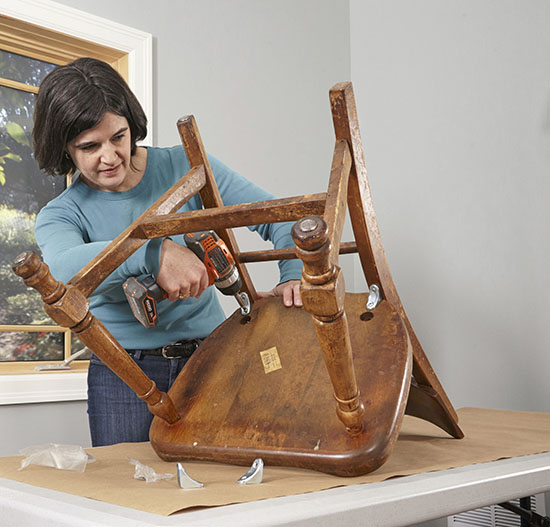

WHAT IT TAKES
TIME: These repairs take from a few minutes to an hour
SKILL LEVEL: Beginner
The creaking sound you hear each time you sit on that old kitchen chair is not a good sign. It has loose joints, and every time you sit on it, you’re wearing down and further loosening them. Someday it’s going to fall apart.
One of these tips will save that chair—and many other pieces of your favorite furniture, too! But keep in mind that these are fast, easy, practical fixes. They are not the best repairs for treasured heirlooms or valuable antiques.
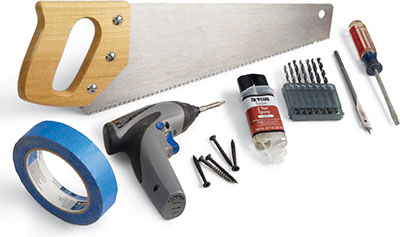
You don’t need a workshop to make these repairs—a few simple tools and a sturdy table will do. And you don’t need any special skills. If you know the most basic stuff—how to cut plywood and drive screws—you can do it!
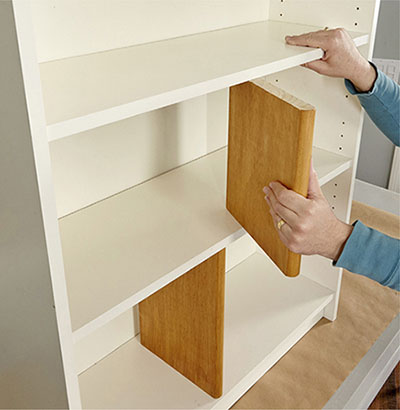
If your shelves sag, sometimes you can simply flip them over—but eventually they’ll droop again. Here’s a permanent solution: Add supports that fit tight between the shelves.
Pine stair tread, which has a rounded front edge, is perfect for this. It’s available at all home centers. Many stores will cut it to length for you. You can paint or stain the supports to match the shelves, of course. But if the shelves hold books, consider staining them a color similar to your books. You’ll be surprised at how well they blend in.
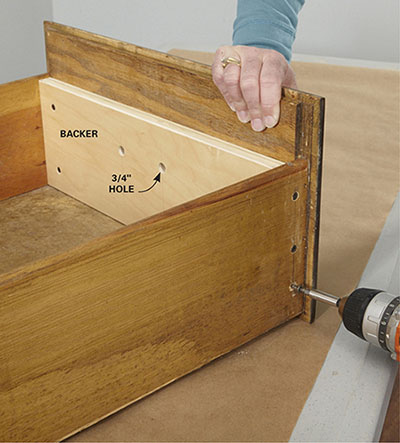
Drawer fronts that are just nailed or stapled to the drawer box often come loose or even fall off completely. You could simply pound the parts back together, but that kind of fix won’t last long. For a repair that’s stronger than the original construction, add a backer to the drawer front.
Make the backer from 3/4-in. plywood and cut it to fit tight inside the drawer. Using a spade bit, drill 3/4-in.-diameter holes in the plywood so you can access the screws that hold the drawer’s handle. Fasten the backer to the inside front of the drawer, then screw the drawer sides to the ends of the backer.
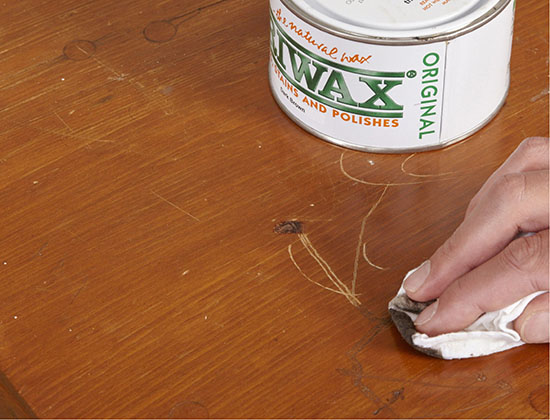
To revive a finish, rub colored paste wax over the entire surface and buff. This isn’t a perfect fix; heavy scratches or dents will still be visible. But light scratches and wear will almost disappear.
For the best camouflage, pick a color that’s slightly darker than the finish. You can find colored paste wax at some paint stores or order it online.
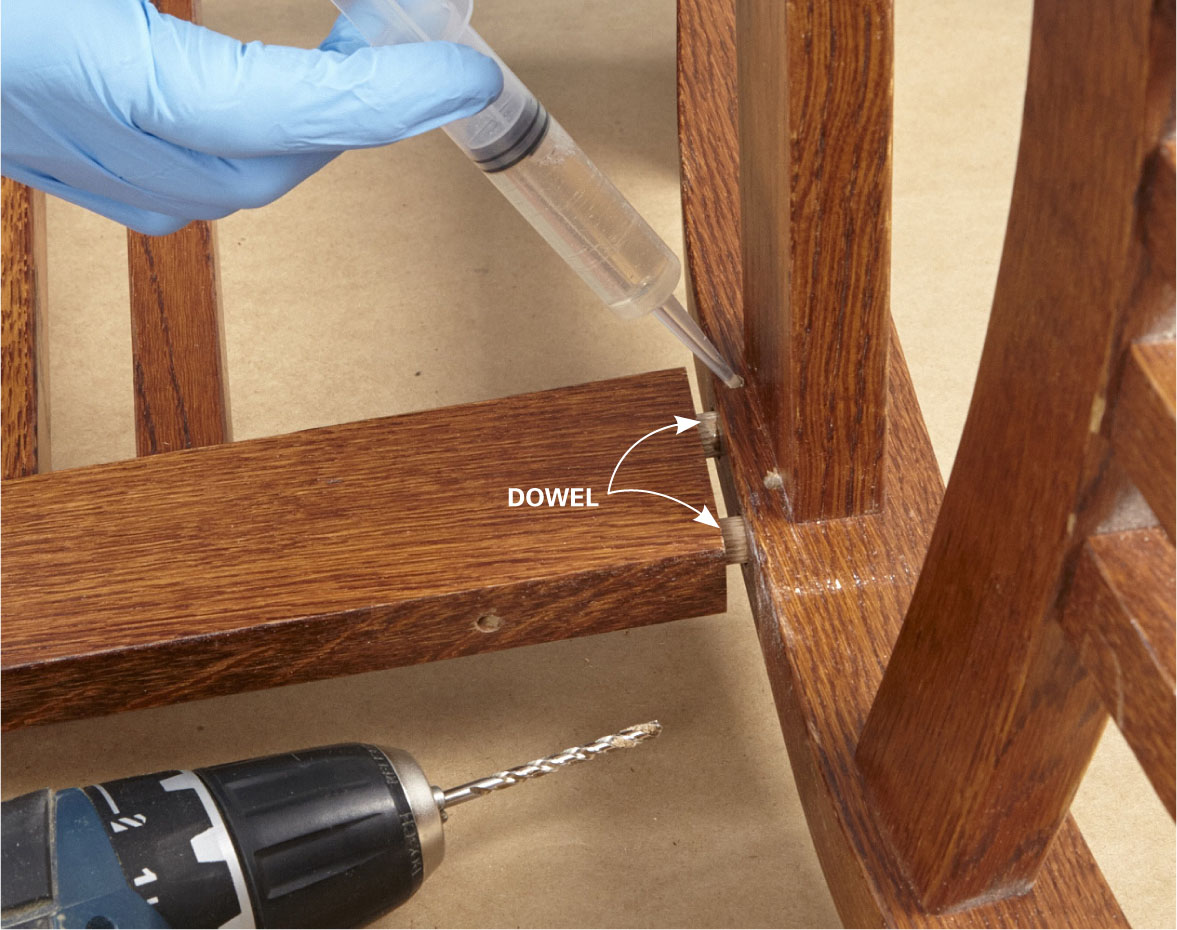
When ready-to-assemble (RTA) particleboard furniture breaks—by being pushed across the floor, for example—the original knockdown fasteners often pull out of the wood and can’t be replaced. The solution is to bypass them completely and screw the piece together from the outside.
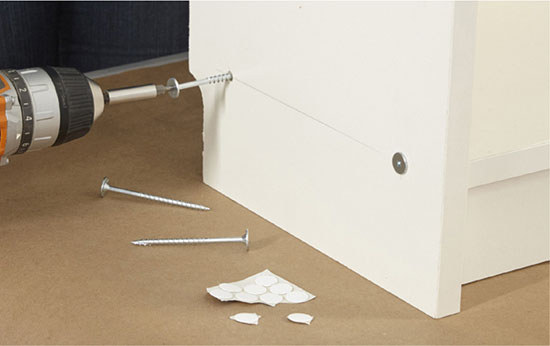
Ordinary screws won’t hold in particleboard, however. You need 2-1/2-in. to 3-in. screws with coarse threads and large, washer-style heads. (Large heads prevent the screws from being pulled through the particleboard.) Many home centers carry “cabinet installation screws” that are perfect for the job. Be sure to drill a pilot hole first, even if the screws have self-tapping points. You can also buy colored self-stick caps to cover the screw heads.
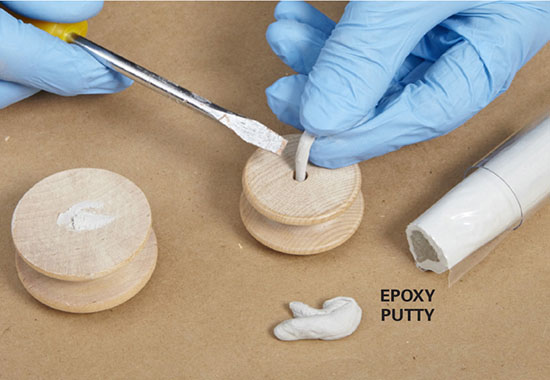
Wooden drawer knobs tend to strip out and then come loose or even pull off. Using a fatter screw or shoving matchsticks into the hole might work, but here’s a sure fix: Fill the hole with epoxy putty, then drill a new hole. Epoxy putty is available at home centers and hardware stores.
Epoxy putty is easy to use. You just cut off the amount you want, knead the piece until the inner and outer layers blend together, then roll it between your fingers to form a thin string. Push the string of putty into the hole with a screwdriver. Then scrape off the excess before it hardens.
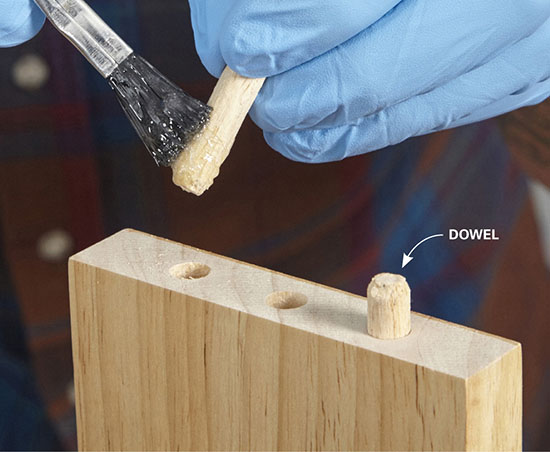
New furniture that’s put together with bolts and nuts often loosens up with use. If retightening the bolts every now and then seems like too much bother, you can take the piece apart and strengthen it with epoxy.
Most RTA furniture uses loose-fitting dowels to align each part. Spread epoxy inside the dowel holes and on the dowels themselves when you reassemble the piece. (If the dowels fit nice and tight, use yellow glue instead—it’s more convenient.) Don’t bother spreading glue on the ends of each part. They usually butt against a finished surface, and no glue will stick to a finish for very long.
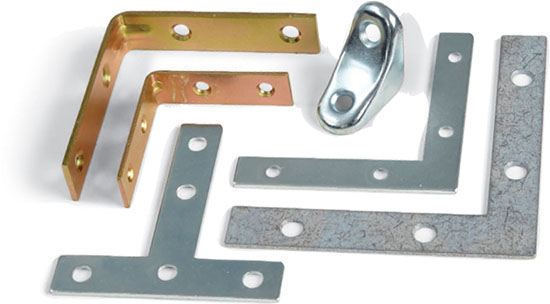
If appearance doesn’t matter, screwing a brace or T-plate onto a piece of furniture is often the quickest way to fix it. Adding metal may not make the piece totally sound, but at least it won’t come apart.
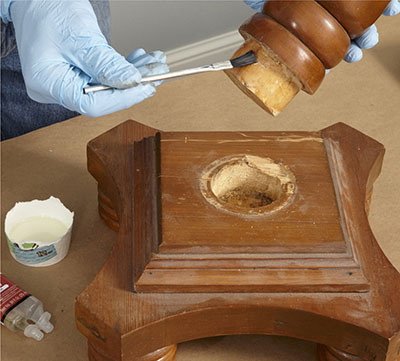
When parts don’t fit tightly, epoxy is the answer. Other woodworking glues—yellow, white or polyurethane—require a snug fit. The gap between parts can’t exceed the thickness of a piece of paper. Epoxy, on the other hand, bonds across a gap of any size.
Epoxy won’t stick well to old glue, so remove as much of the old glue as you can with a file or coarse sandpaper. Most epoxies must be used within five minutes of mixing, but you can buy a slower-setting epoxy if you need more time.